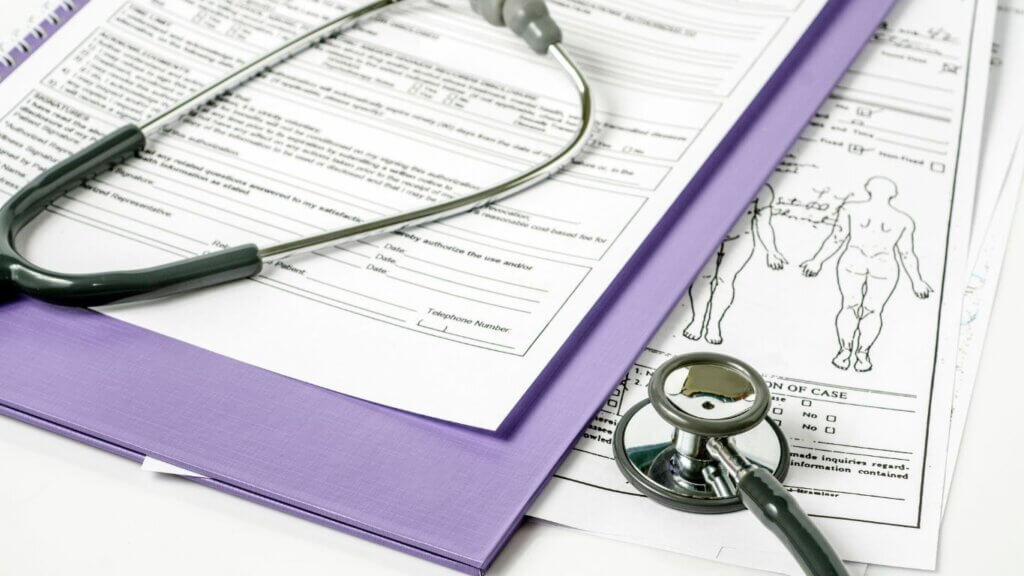Your cart is currently empty!
Clinical Data Safety and Reporting for Medical Devices
Why Companies Choose NAMSA
Clinical Professionals on Staff
Adjudications Performed in the Last Year
Medical Directors
Network of KOLs Serving on Study Committees
NAMSA Experience With Medical Device Safety Management and Reporting
With technology at its crux and a dedicated team of world-renowned physicians at the helm, NAMSA offers the highest quality Safety Management and Reporting services in the CRO industry. We offer:
- End-to-end service from Medical Monitoring, Clinical Events Committees (CEC), Data and Safety Monitoring Board (DSMB) services, Adverse Event Reporting, MedDRA and WHODrug coding. Providing clients with a one-stop solution for their safety needs
- Dedicated team led by physicians who work closely with CEC and DSMB members across various therapeutic areas, including cardiology, vascular (peripheral, neurovascular, and cardiovascular), orthopedics, and more.
- Highly qualified professionals with extensive experience in safety management. All medical monitors have medical degrees, ensuring high-quality safety assessments.
- Proprietary system to manage and track assessments of adverse events during the clinical trial with a high degree of customizability, ensuring that data collection and reporting are tailored to the specific needs of each trial
- Proven track record of successful study completions and no complaints from National Competent Authorities
Real-Time Data Monitoring Systems
Medical monitors offer real-time monitoring of clinical trial data, which allows for quick identification of potential safety concerns and appropriate action. Our proprietary system enhances this process by providing a customizable platform for managing and tracking assessments and adjudications of adverse events.
Key Features and Benefits
- Customizable to meet unique clinical trial requirements.
- Imports adverse events (AEs) from the EDC system, reducing manual entry and errors.
- Allows medical monitors to assess AE causality and seriousness, supporting ongoing reviews.
- Facilitates Clinical Events Committee (CEC) work by opening new Case Report Forms (CRFs) for review, which has the added benefit of the ability to upload all documents needed by CEC to perform event adjudication.
- Highlights updated events for timely and accurate regulatory reporting.
- Centralized platform for managing all safety data, enhancing organization and analysis.
- Ensures secure data storage and management, protecting sensitive information.
Safety Management and Reporting Process and Services
The NAMSA safety management and reporting solution supports your trial from the start-up phase all the way through to closeout. Leveraging our extensive expertise, we enhance efficiency and deliver unparalleled turnaround times that set us apart in the industry. Our comprehensive services guarantee that every aspect of your trial is meticulously handled, providing you with accurate and timely safety data. Below is an overview of our high-level process, detailing our operations:
- Start-Up Phase
- High-level review of safety aspects of protocol
- CEC and DSMB set-up: committee charters & procedures, member recruitment, member agreement & numeration negotiations
- Continuous Monitoring, Evaluation and Coding
- Medical Monitors review all Adverse Events (AEs) and conduct ongoing medical assessments.
- Evaluation of the severity and causality of the adverse event to the procedure/device.
- Code adverse events using MedDRA terminology to standardize the information
- Review, Analysis, and Follow-up
- Clinical Events Committee (CEC). Review individual adverse events to determine their relation to the procedure and device and if they require adjudication by the CEC.
- Data and Safety Monitoring Board (DSMB). Review aggregate safety data to ensure the ethical conduct of the study and patient safety
- Export
- Prepare and submit safety reports to National Competent Authorities.
- Final report summarizing all adverse events, medical monitor assessments, and CEC adjudications performed during the trial.
Medical Monitoring
Our medical monitoring service involves continuous oversight of clinical trials by professionals with medical degrees. These monitors review all adverse events (AEs) reported during the trial, performing various assessments including assessing causality to the study device and procedure and whether the event requires adjudication by the CEC. They ensure that any potential safety risks are identified and addressed promptly. Additionally, in cases where there is no DSMB, medical monitors may conduct safety data trending to detect any emerging safety signals and safeguard the patient population.
Key Features:
- Expert Oversight: Continuous monitoring by experienced medical professionals. All medical monitors have medical degrees, ensuring high-quality safety assessments
- Risk Identification: Prompt identification and addressing of potential safety risks using a customizable proprietary system.
- Trend Analysis: Data trending to detect emerging safety signals.
Clinical Events Committee (CEC)
The CEC is an independent board of doctors who review individual adverse events to determine their relation to the device and whether they meet the study safety endpoints. This committee ensures that the data is systematically reviewed by unbiased experts who are not involved in the trial. The CEC can operate independently through an electronic system or hold meetings to discuss and assess events.
Key Features:
- Independent Review: Unbiased evaluation by independent medical experts.
- Systematic Assessment: Thorough review of adverse events against study safety endpoints.
- Flexible Operation: Capability to operate electronically or through in-person meetings.
- Comprehensive Network: Extensive list of Key Opinion Leaders (KOLs) across various therapeutic areas, including cardiovascular, neurovascular, orthopedic, and more.
Data Safety Monitoring Board (DSMB)
The DSMB consists of three to five doctors, often including a biostatistician, who review aggregate safety data to ensure the ethical conduct of the study and patient safety. They monitor the overall safety of the trial, checking for excessive adverse events or deaths related to the device. The DSMB provides recommendations on whether to continue, modify, or stop the trial based on their findings.
Key Features:
- Multidisciplinary Team: Includes doctors and a biostatistician for comprehensive review.
- Ethical Oversight: Ensures ethical conduct and patient safety throughout the trial.
- Actionable Recommendations: Provides guidance on trial continuation, modification, or termination.
- Comprehensive Network: Extensive list of Key Opinion Leaders (KOLs) across various therapeutic areas, including cardiovascular, neurovascular, orthopedic, and more.
Adverse Event Reporting
Our associates are trained to report Adverse Events to regulatory authorities. This includes preparing and submitting MDCG 2020-10/2 safety report form, annual safety, and quarterly reports, as well as other specific reports required by different regulatory bodies. The reporting process ensures that all safety data is communicated accurately and promptly to maintain compliance with regulatory standards.
Key Features:
- Regulatory Compliance: Ensures adherence to regulatory reporting requirements.
- Timely Submissions: Prompt preparation and submission of safety reports.
- Accurate Communication: Clear and precise reporting of adverse events.
MedDRA Coding
MedDRA (Medical Dictionary for Regulatory Activities) coding involves categorizing adverse events using a standardized regulatory dictionary. Our certified coders ensure that all AEs are accurately coded, facilitating consistent and clear communication of safety data across different regulatory authorities and stakeholders.
Key Features:
- Standardized Coding: Use of MedDRA for consistent categorization of adverse events.
- Certified Coders: Expertise in accurate and reliable coding practices.
- Clear Communication: Facilitates clear and consistent safety data reporting.
Take the Next Step
Want to learn more about our experience with clinical data safety and DSMB setup?
Meet Our Clinical Experts
Explore the depth of our team’s expertise.
Related Services That May Interest You

Clinical Data Management

Biostatistics Consulting

Clinical Study Reporting (CSR)
Frequently Asked Questions (FAQ) About Clinical Safety
What should be included in a Safety Monitoring Plan (SMP)?
A DSMP should include the composition and responsibilities of monitors, risk minimization strategies, progress and safety monitoring plans, and procedures for reporting adverse events.
What should be included in a Safety Management Plan (SMP)?
A SMP outlines all activities performed in a study to ensure the safety of enrolled subjects, including roles and responsibilities and a summary of reporting requirements. SMPs are recommended for all implantable medical device trials.
What is a CEC (Clinical Events Committee)?
A Clinical Events Committee is an independent group of medical experts responsible for evaluating and classifying critical safety and efficacy endpoints in clinical trials, particularly for medical devices and high-risk studies.
What is a DMC (Data Monitoring Committee ) / DSMB (Data Safety Monitoring Board)?
A Data Monitoring Committee or a Data Safety Monitoring Board is an independent group that consists of medical experts and often a biostatistician who monitors patient safety and treatment efficacy data while a clinical trial is ongoing. These members should have relevant clinical experience and an understanding of clinical trial methodology. The DSMB/DMC meets throughout the study to discuss aggregate safety and possibly efficacy data and provides a recommendation to the Sponsor at the end of their meeting. These votes may be included to continue the trial without modifications, continue with protocol modifications, or terminate/pause the trial.
Which studies require DMC (Data Monitoring Committee ) / DSMB (Data Safety Monitoring Board)?
While there is no official requirement for DMCs/DSMBs, regulatory agencies may request an additional safety reviewer during a trial. Commonly these are requested in pre-market trials and trials that have a gold standard control arm. Having a DMC/DSMB review the study data adds a layer of validity towards the study safety data, as this has been approved and deemed safe by an independent committee of experts.
Which studies require a CEC (Clinical Events Committee)?
There is no official requirements for having a CEC adjudicate events in clinical trials. However, if the primary endpoints or performance goals of the trial are based upon safety events, having a CEC review of study events is of interest for Sponsors. A CEC will provide and independent and systematic review of study events as per the definitions used in the study protocol, reducing bias and adding a layer of validity in study data and analysis.



